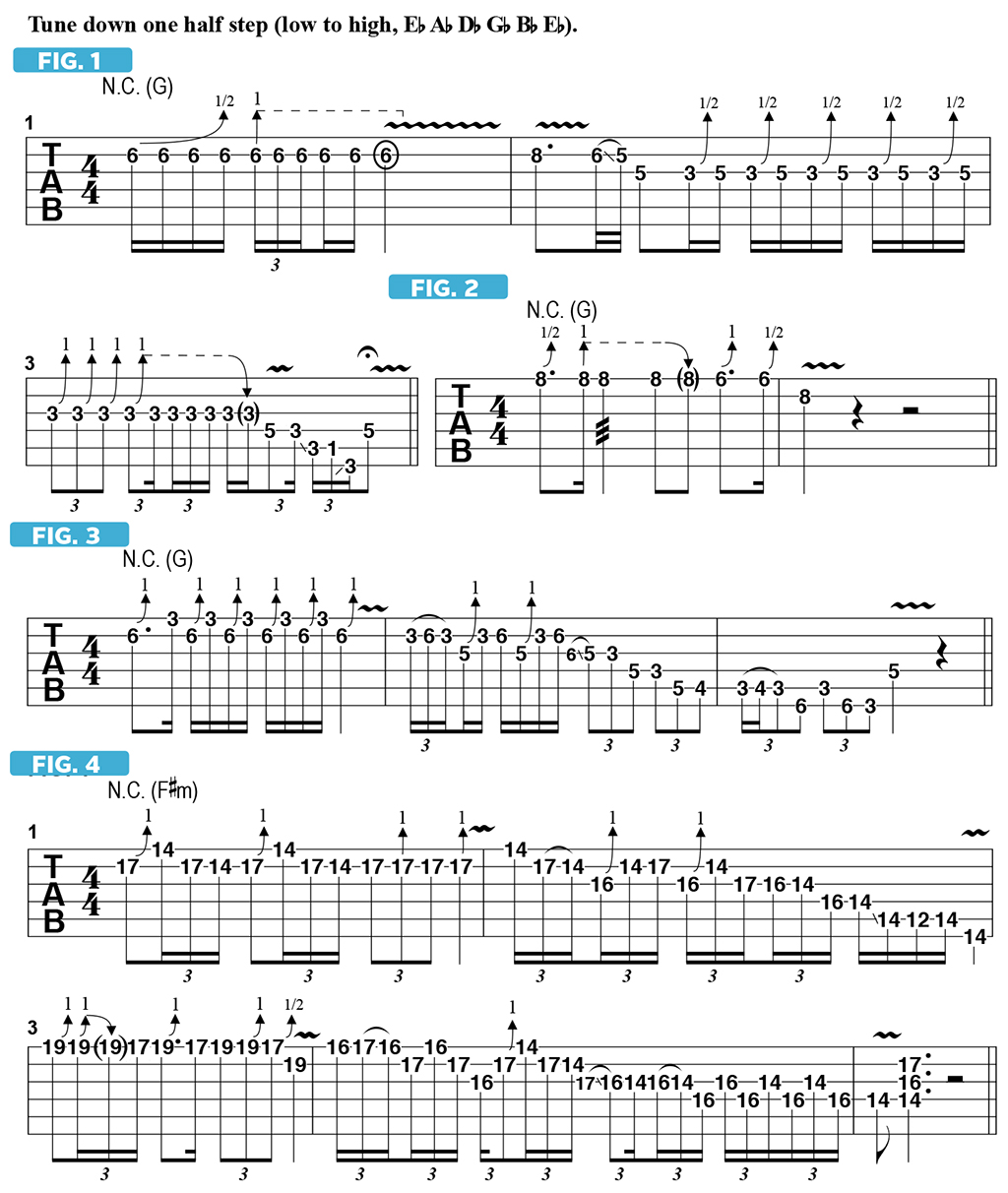How to Build a Creative, Emotive Guitar Solo
In his latest GW lesson, Judas Priest's Richie Faulkner teaches you how to draw the listener in and to tell a story with your solos.
When I’m faced with performing solos either in the studio or onstage, I can’t help but think back to all of the players who have inspired me the most, like Jimi Hendrix, Ritchie Blackmore and Michael Schenker. These references to my guitar heroes serve me well, because each of these legendary players knows how to draw the listener in and to tell a story with a solo. Just like when I’m speaking, my solo should be a clear statement in four parts: 1) I will first establish where I’m coming from 2) I’ll then take a moment to embellish the point a bit; 3) I’ll bring in some technical wizardry to dazzle you; and 4) I’ll wrap it up with a reference back to the opening statement and leave you wanting more.
The concept is to present a solo as a mini composition within a composition. All of my favorite rock guitar solos cover each of these different aspects of musical communication.
In this regard, to my way of thinking, I like a solo that doesn’t open with a barrage of notes. With fewer notes, there’s more room for expression and interpretation. Blackmore and Schenker both built on the blues approach of Hendrix, but also incorporated classical elements, making their solos emotional but also unpredictable and musically adventurous.
Blackmore might play a line like this (see FIGURE 1). The phrase, which is based on the G minor pentatonic scale (G Bb C D F), begins with a gradual bend from the minor, or “flatted,” seventh, F, up a whole step to the root note, G, which is picked in a rhythmically unpredictable way and culminates with an aggressive bend vibrato. In bar 2, the repeating index-finger half-step bends give way to the whole-step bends in bar 3, after which the melody resolves, via a quick shift down through the scale. FIGURE 2 reflects the same approach, in terms of the use of gradual bends, unpredictable rhythms and bluesy vibratos.

If I add some speed, flashiness and complexity to the licks, as in FIGURE 3, I can steer the line in the direction of the style of Michael Schenker. It may sound more aggressive and intricate, but that bluesy feeling is still at the core of the musical statement.
There are so many creative ways in which a guitarist can grab the listener’s attention at the beginning of a solo. I might use a “guitar noise,” like a whammy-bar dive, an aggressive pick slide or an intense unison-bend vibrato, all of which are effective ways to say, “Listen to me and check out what I have to say!”
FIGURE 4 offers an example of how I might build a short, four-bar solo: Bar 1 establishes the mood and a general melodic and harmonic approach; bar 2 builds on that initial idea by fleshing it out and adding a “response” to it; bar 3, while borrowing from the rhythmic phrasing of bar 1, presents another angle, by moving higher up the fretboard; and bar 4 concludes the idea, via more complex areas of melody and harmony, with the inclusion of the second, G#, and slightly more intricate rhythms.
It will always come back to whatever works for you, and my preference is to listen and follow my natural musical path by staying attuned to what feels right. You will get to the point where you can press record and instinctively know you’re on the right path.
Richie Faulkner has been a member of legendary U.K. heavy metal band Judas Priest since 2011. Their 2018 album, Firepower, became the band's highest-charting album ever in the U.S.
Get The Pick Newsletter
All the latest guitar news, interviews, lessons, reviews, deals and more, direct to your inbox!
“There are so many sounds to be discovered when you get away from using a pick”: Jared James Nichols shows you how to add “snap, crackle and pop” to your playing with banjo rolls and string snaps
Don't let chord inversions bamboozle you. It's simply the case of shuffling the notes around







![Joe Bonamassa [left] wears a deep blue suit and polka-dotted shirt and plays his green refin Strat; the late Irish blues legend Rory Gallagher [right] screams and inflicts some punishment on his heavily worn number one Stratocaster.](https://cdn.mos.cms.futurecdn.net/cw28h7UBcTVfTLs7p7eiLe.jpg)


